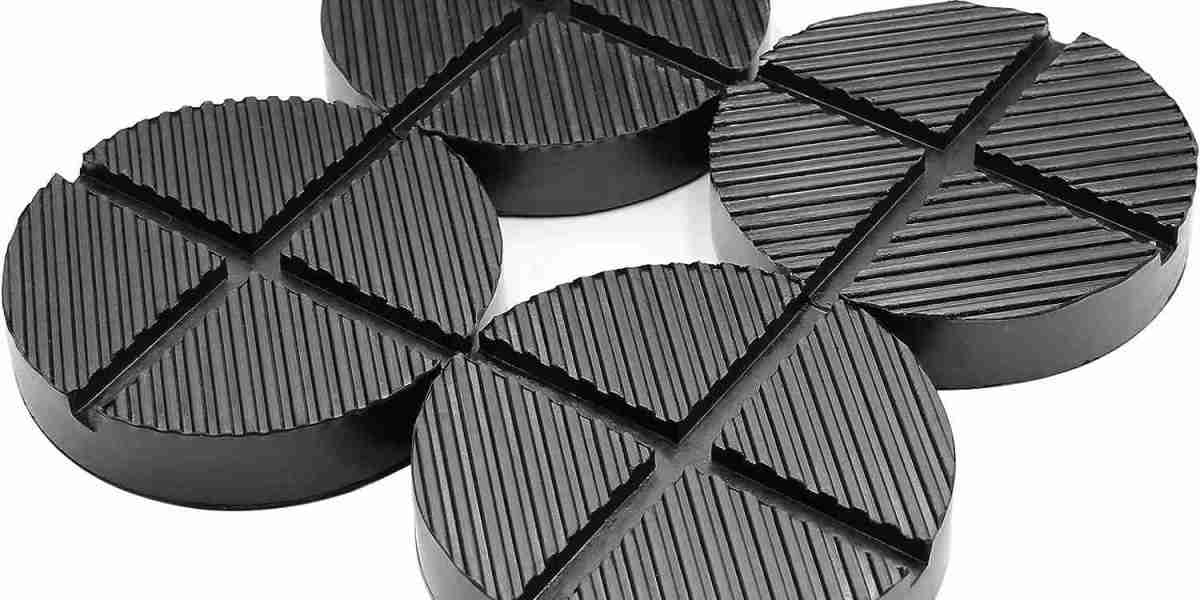What are Jack Rubber Pads?
Jack rubber pads are specialized pieces of equipment designed to be used in conjunction with jacks—mechanical devices that lift heavy objects.
They serve as a cushion between the jack and the object being lifted, whether it’s a vehicle, a piece of machinery, or a building structure.
The primary purpose of these pads is to distribute the load evenly across a surface, protect the object being lifted, and minimize the risk of slippage.
Composition and Design
Jack rubber pads are typically constructed from durable rubber compounds, chosen for their strength, elasticity, and resistance to wear and tear.
The rubber material is often reinforced with fibers or other materials to enhance its load-bearing capacity and longevity.
These pads are designed to absorb the force exerted by the jack, reducing the direct pressure on the object being lifted and preventing damage to the surfaces involved.
The design of jack rubber pads can vary depending on their intended use. Some pads feature grooves or patterns on the surface to increase grip and reduce the risk of slippage.
Others may have a smooth surface, which is ideal for certain applications where a high degree of contact is required. The thickness of the pad also varies, with thicker pads generally providing greater protection and load distribution.
Benefits of Using Jack Rubber Pads
Protection of Surfaces: One of the primary benefits of using jack rubber pads is the protection they offer to both the object being lifted and the surface on which the jack is placed.
Without a rubber pad, the metal components of a jack can easily scratch, dent, or otherwise damage surfaces, leading to costly repairs or replacements.
· Enhanced Stability: Rubber pads increase the stability of the jack by providing a non-slip surface. This is particularly important in situations where the ground is uneven or when lifting objects with smooth, slippery surfaces.
· Vibration Dampening: In industrial settings, vibration can be a significant issue, leading to wear and tear on machinery and equipment. Jack rubber pads help dampen these vibrations, extending the life of both the jack and the equipment it supports.
· Load Distribution: By distributing the load more evenly across the pad, the risk of structural damage to both the jack and the object being lifted is reduced. This is especially important when lifting heavy or irregularly shaped objects.
Common Applications of Jack Rubber Pads
Jack rubber pads are used across a wide range of industries and applications. Some of the most common include:
· Automotive Industry: Mechanics use jack rubber pads when lifting vehicles to prevent damage to the car’s undercarriage. These pads are also used when jacking up cars on uneven surfaces to provide additional stability.
· Construction: In the construction industry, jack rubber pads are used to lift heavy machinery, building materials, or even sections of buildings. The pads help protect the integrity of the materials and ensure a stable lift.
· Industrial Settings: Heavy machinery often needs to be lifted for maintenance or installation, and jack rubber pads are essential for protecting both the machinery and the floor or platform beneath it.
How to Choose the Right Jack Rubber Pad
When selecting a jack rubber pad, it’s essential to consider the specific needs of your application. Key factors to keep in mind include:
· Load Capacity: Ensure that the pad can support the weight of the object you intend to lift. Overloading a pad can lead to failure and potential damage.
· Size and Thickness: The size of the pad should match the size of the jack and the object being lifted. Thicker pads offer more protection and stability, but they may not be necessary for lighter loads.
· Surface Grip: Depending on the application, you may need a pad with a textured surface to prevent slipping. For delicate surfaces, a smooth pad might be more appropriate.
· Material Quality: Invest in pads made from high-quality rubber materials. Cheaper pads may not offer the same level of durability and protection, leading to more frequent replacements.
Conclusion
Jack rubber pads are an indispensable tool in various industries, offering protection, stability, and durability during lifting operations.
Whether you're a mechanic, a construction professional, or involved in industrial maintenance, understanding the importance of these pads and selecting the right one for your needs can make all the difference in ensuring safe and efficient operations.
By considering factors such as load capacity, size, and material quality, you can find a jack rubber pad that meets your specific requirements and provides long-lasting performance.














